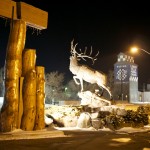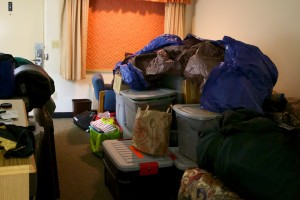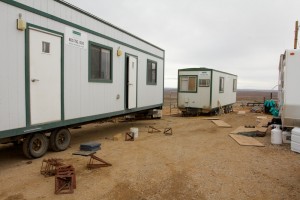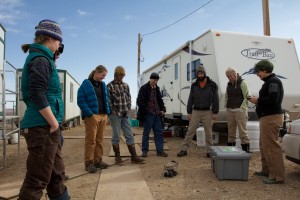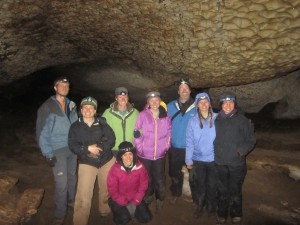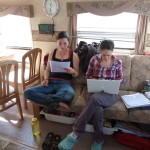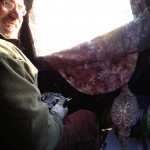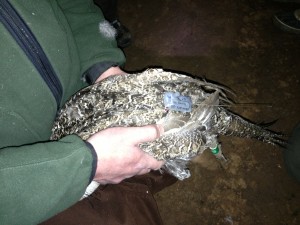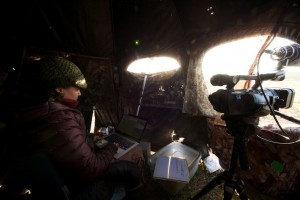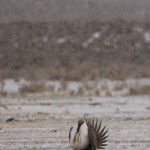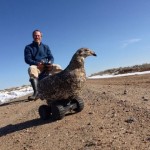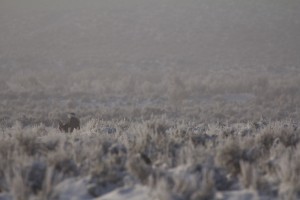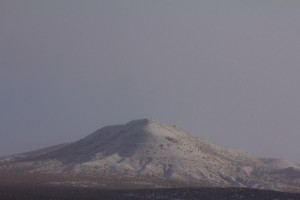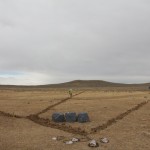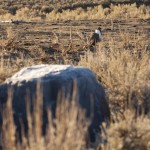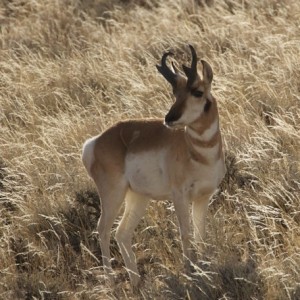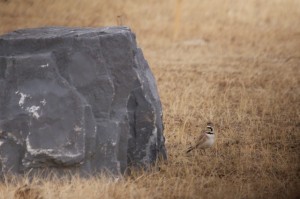March 4: It’s hard to believe that it’s already been a week since we loaded up the Durango and trusty Dodge pick-up (“Snowchief”) and headed out for Wyoming. A thousand miles, one-and-a-half books on tape, and one smoky hotel in rural Nevada, and we’ve exchanged the warm California winter for the icebox that is Lander. Although it had been about nine months since we last said goodbye to our second home in the sage, pulling into town always makes me feel like I’ve never left. From the friendly guy at RadioShack to the burgers and brew at the Lander Bar to the dips in the road as we leave the highway in Hudson, it really does feel like a time-warp has just removed everything that’s happened since we pulled up stakes last year. It is actually kind of eerie.
In spite of the familiarity of the place, field work is not exactly like Groundhog’s Day. Each year has it’s own set of challenges though. The first week was a bit of a “hurry up and wait” affair. We rushed to get the trailer out of storage in Riverton, only to find, when we de-winterized it, that the water heater wasn’t working. A night in the RV park with the heater running fixed that problem, and we got it up the hill the next day in hopes of get camp up and running quickly. Unfortunately, high winds east of us prevented the work trailer delivery from Casper on both Friday and Saturday. This has happened only once or twice before (last in 2011), and we actually asked some of the crew with flexibility to delay their arrival.
This had the added benefit of not having people driving during the snowstorm that hit on Saturday. We only got a few inches in Lander, but temperatures dropped to about zero. We more or less stayed in the hotel, staying out of the cold and catching up on computer tasks while we waited for the trailer delivery. With no good place to unload, or gear stayed in the hotel rooms as well. Finally one office trailer arrived on Monday gave us room to unpack the RV and make some living space. The second office trailer (yes, our first 3-trailer camp since 2008) came just in time for several assistants.
While we may not have been ready, the sage-grouse seem to be, at least a lot more than last year. With minimal snow on the ground and what seems like healthy sage for them to eat, we’ve already seen males and in some cases females on the lek.
By Tuesday we had the whole crew, and were able to welcome them to Chicken Camp 2014 edition! Welcome back Frank, and welcome Jess, Julia, James, Sam, and Sean!

